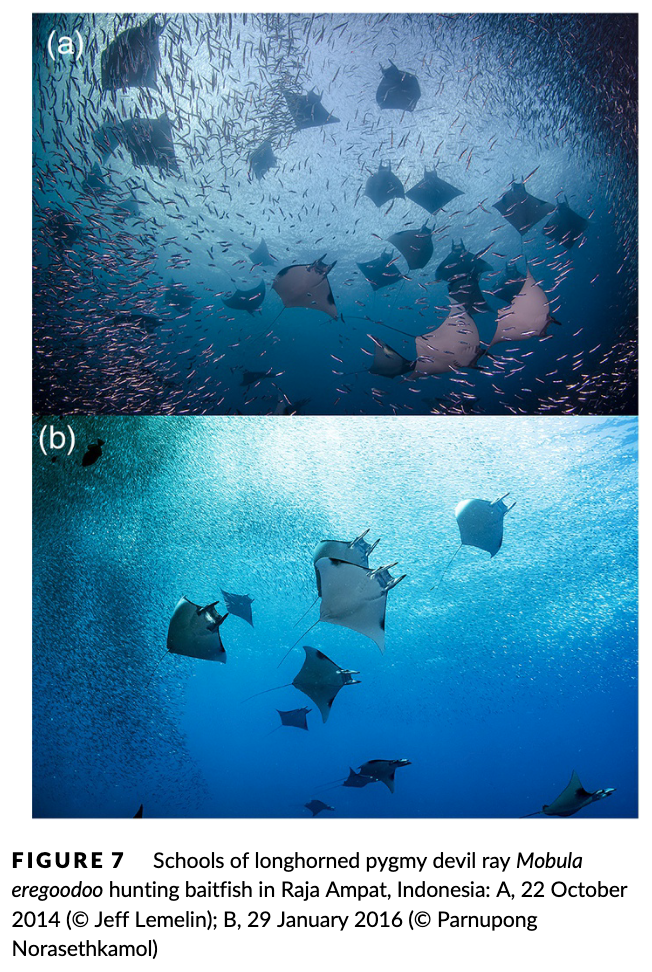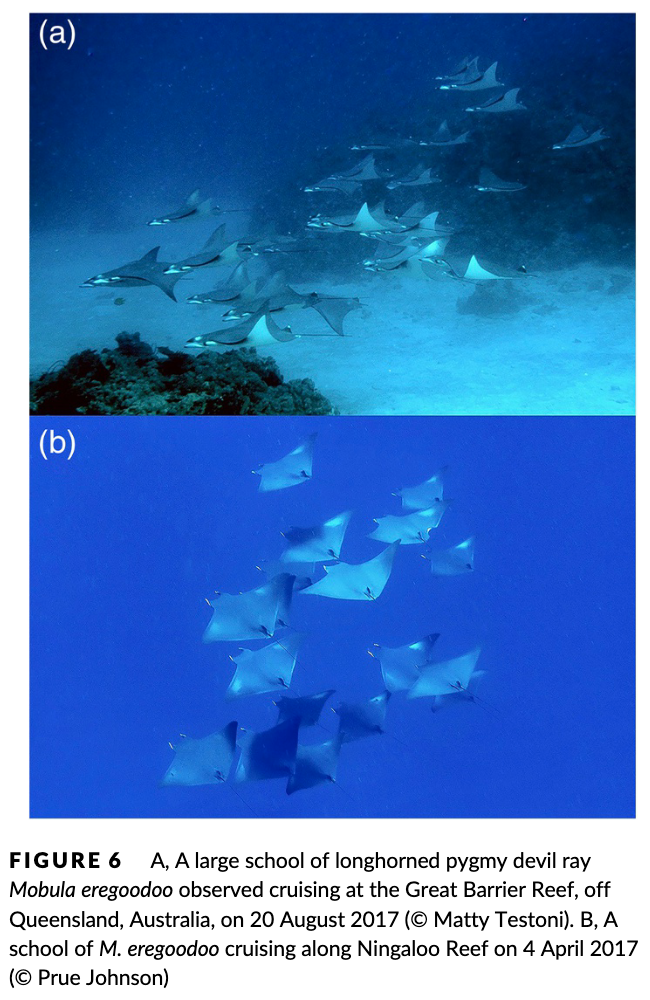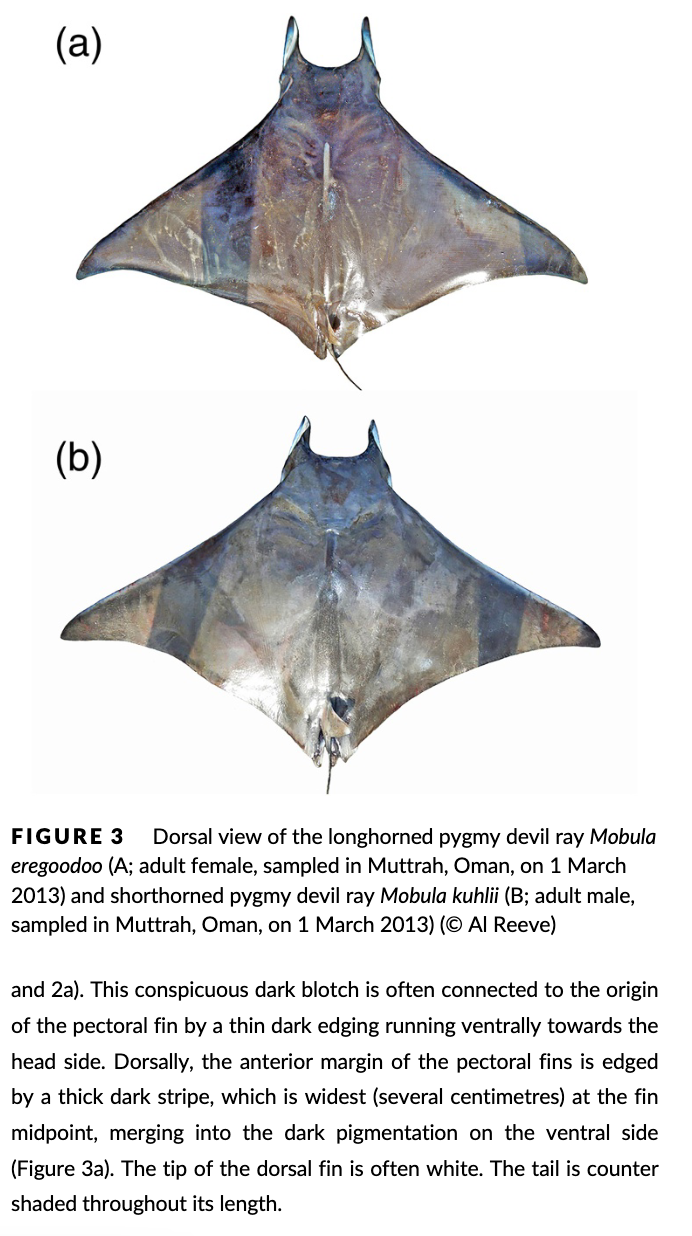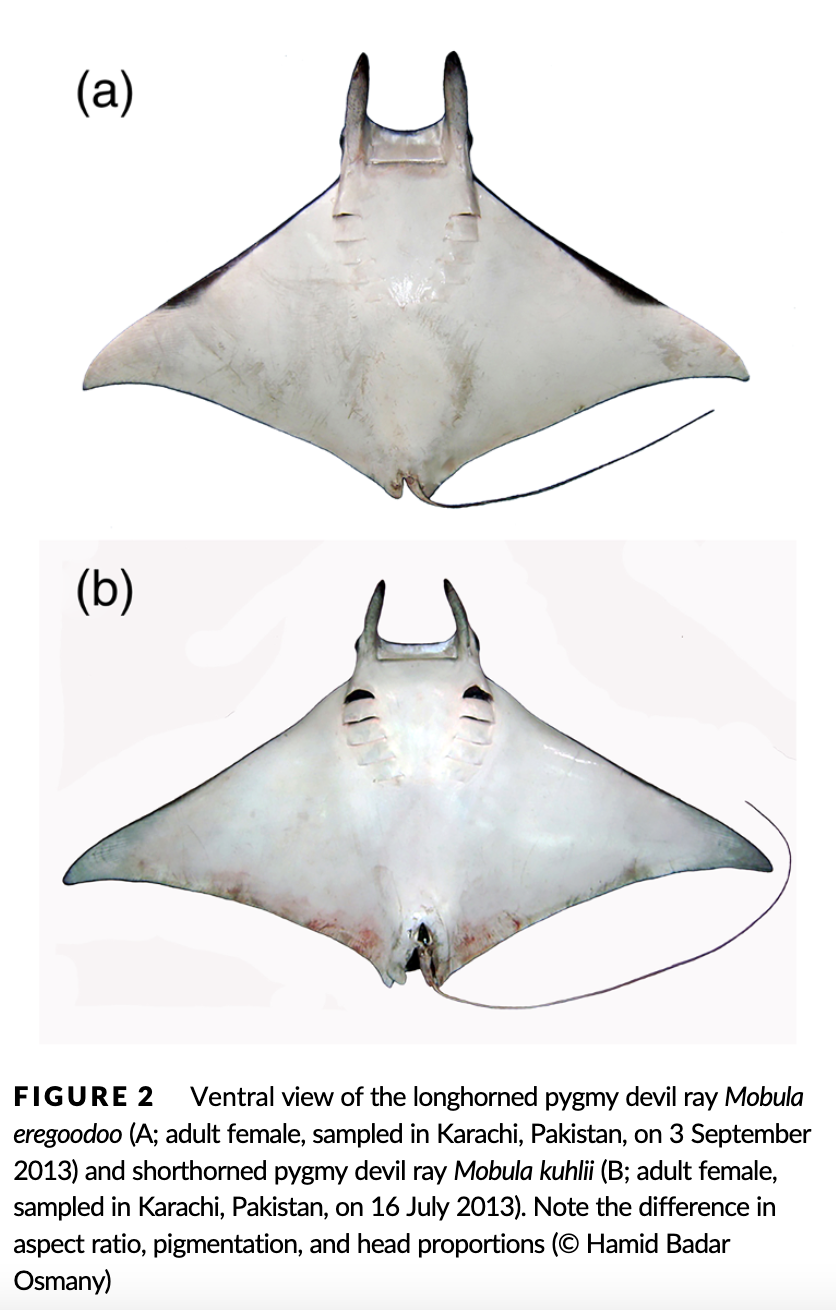Taxonomic status, biological notes, and conservation of the longhorned pygmy devil ray Mobula eregoodoo (Cantor, 1849)
November 2019
Giuseppe Notarbartolo di Sciara, Sylvain Adnet, Mike Bennett, Matt K. Broadhurst, Daniel Fernando, Rima W. Jabado, Betty J.L. Laglbauer & Guy Stevens
Keywords: Coastal • Conservation Evaluation • Fish • Fishing • Ocean • Taxonomy

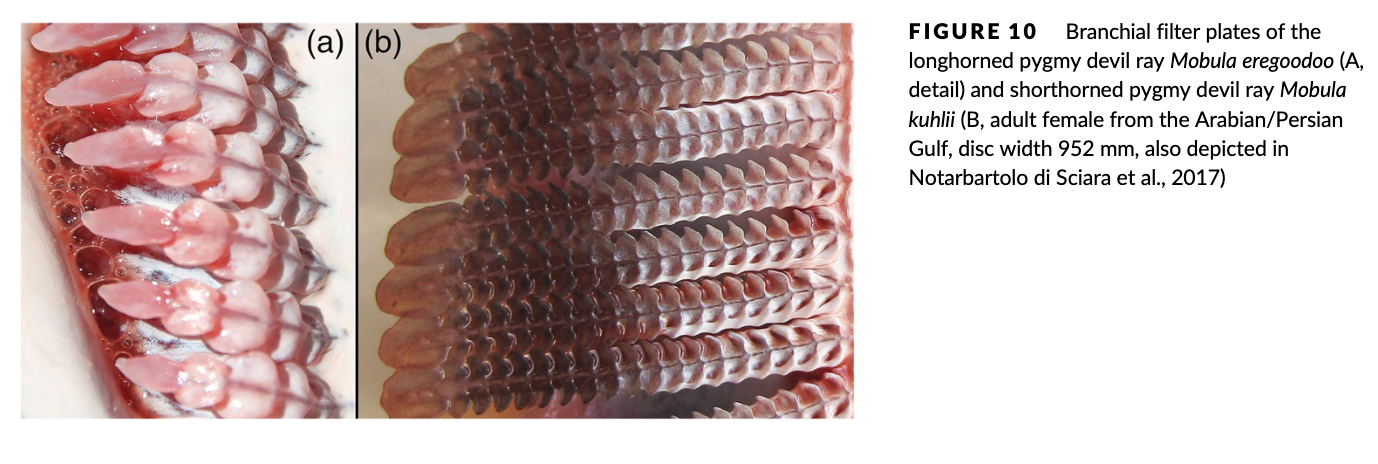
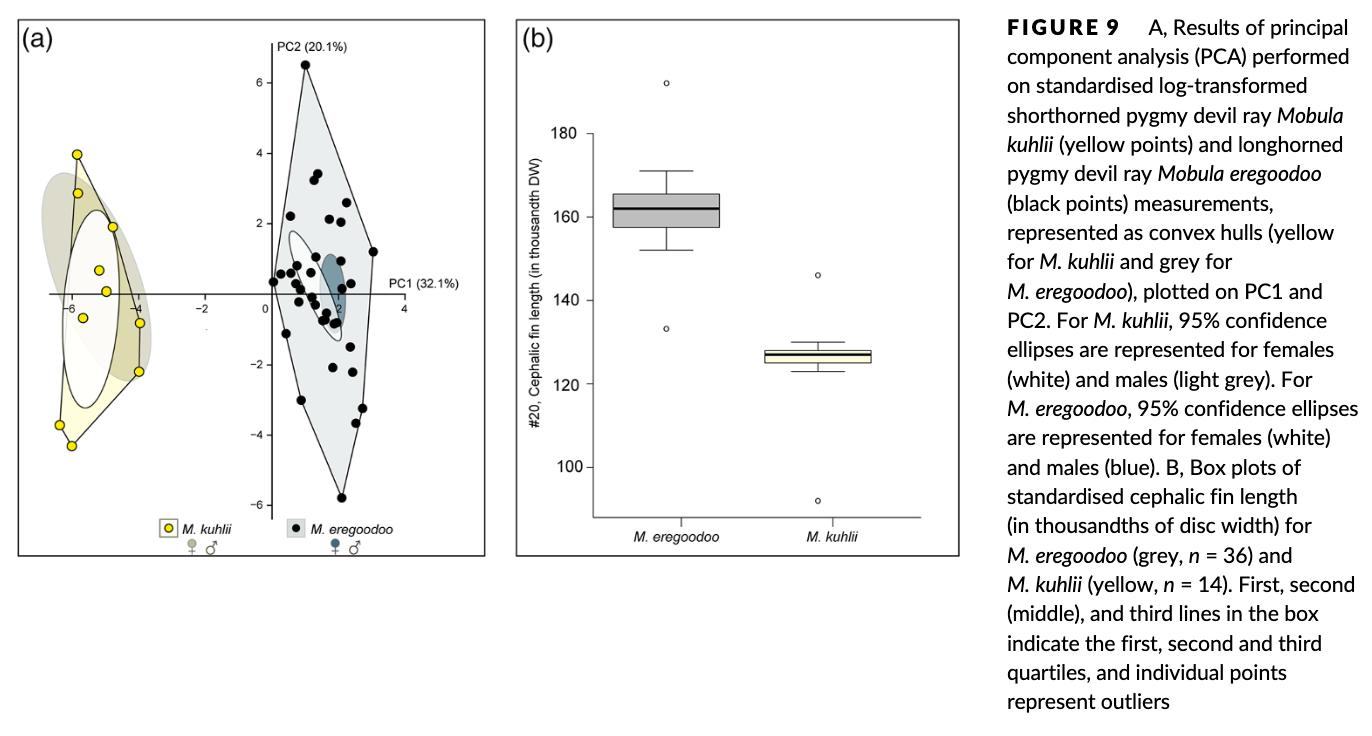
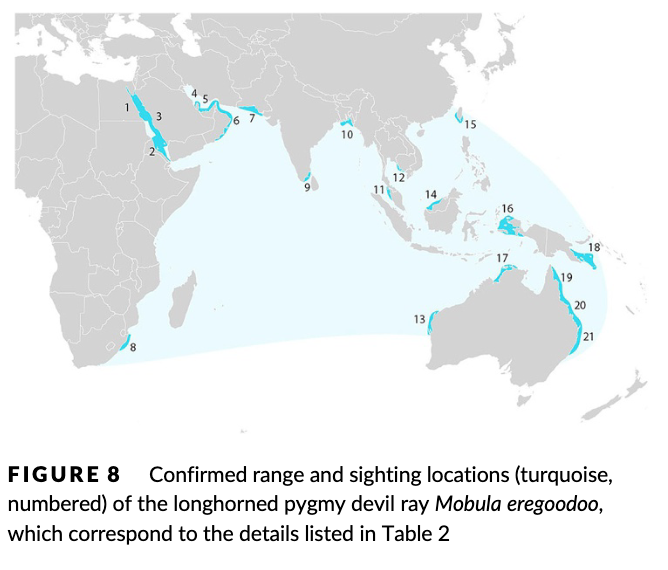
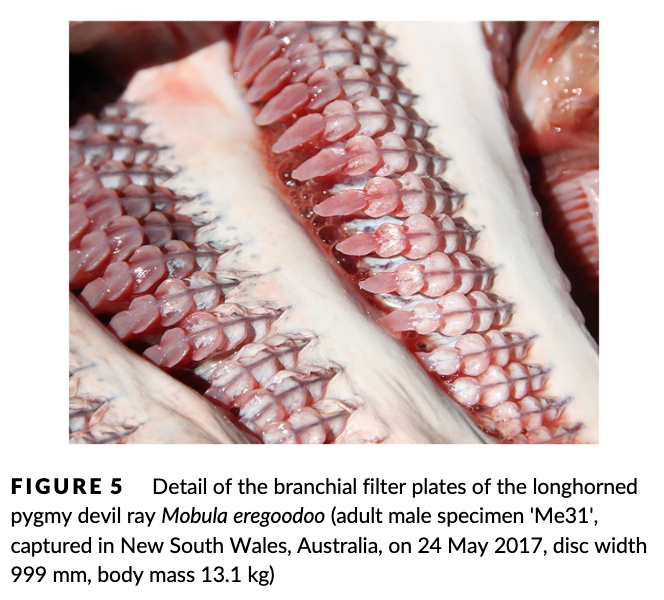
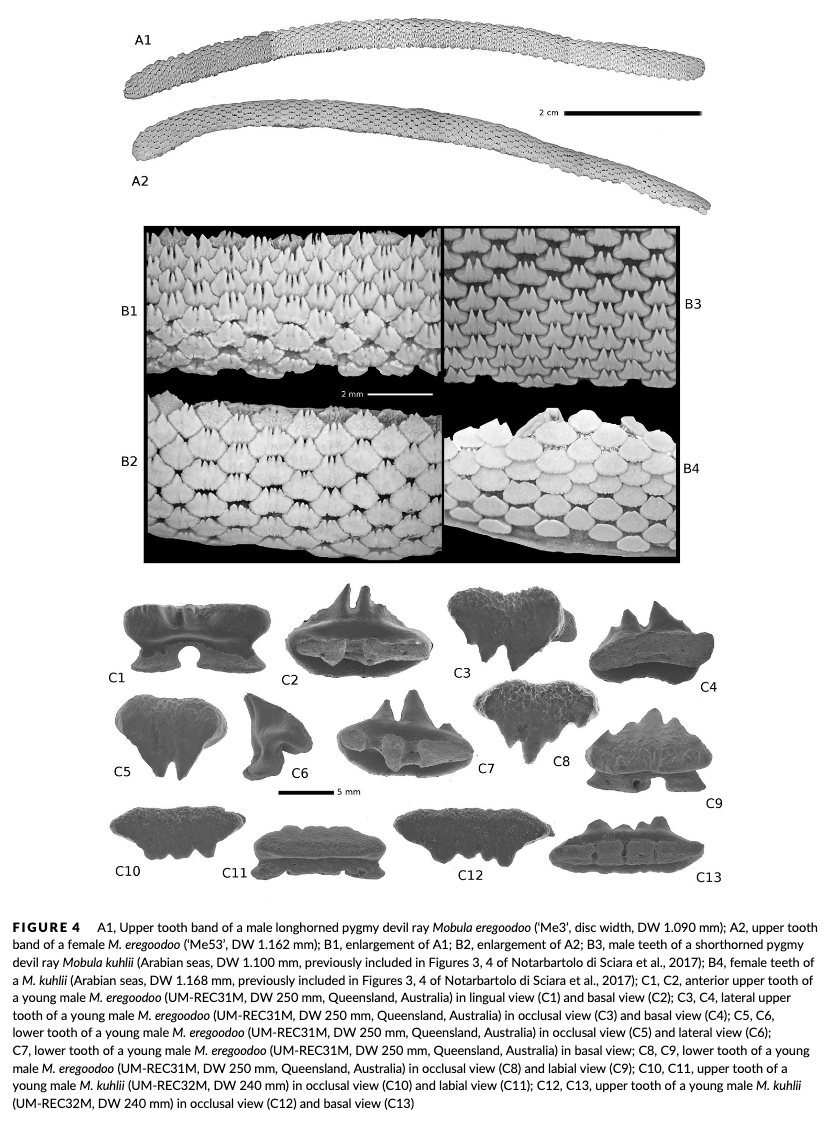
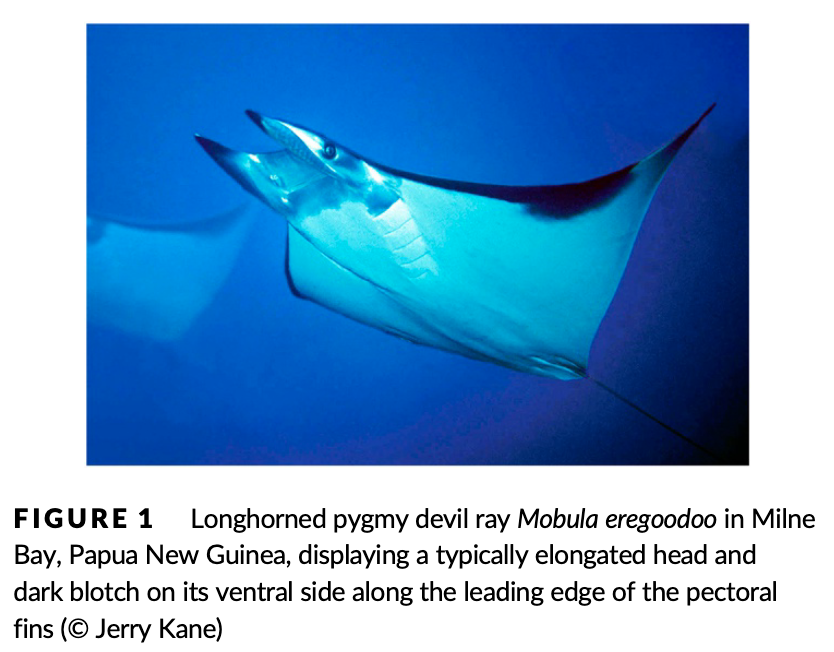
Summary: This study has found that the longhorned pygmy devil ray (Mobula eregoodoo) is a distinct species, contrary to previous assessments where it was considered a synonym of Mobula kuhlii. The study was based on new information gathered from the species' range and genetic investigations. Accurate taxonomic assessments are important for effective species conservation, especially in managing direct exploitation or bycatch in fisheries. Mismanagement resulting from failing to recognize distinct species can lead to underestimating threats of extinction.
Abstract
“1. The longhorned pygmy devil ray Mobula eregoodoo (Cantor, 1849), formerly known as Mobula eregoodootenkee (Bleeker, 1859), is a small mobulid with a disc reaching a maximum width of 1.3 m, widely ranging in tropical and subtropical latitudes across the Indian Ocean, the Indo-Pacific region, and the western Pacific Ocean.
2. A recently emerged opportunity to examine several (n = 47) M. eregoodoo specimens bycaught in bather protection gillnets off New South Wales, Australia, together with new information assembled from other areas of its range, now allows for a redescription of the species, which was incompletely described in the past because of a paucity of specimens.
3. Based on the morphometric, morphological, ecological, and behavioural elements presented here, corroborated by recent genetic investigations, we argue that M. eregoodoo (Cantor, 1849) is a valid species, distinct from shorthorned pygmy devil ray Mobula kuhlii (Müller & Henle, 1841). These findings are contrary to a recent revision of Mobula, where it was assessed as a synonym of M. kuhlii.
4. The accuracy of taxonomic assessments underpins the effectiveness of species conservation, particularly when direct exploitation or bycatch in various fisheries needs to be managed for sustainability. Failing to recognize that two similar-looking species are distinct, such as M. eregoodoo and M. kuhlii, creates uncertainties that could result in mismanagement and underestimating local and global threats of extinction.”
Author Affiliations
Tethys Research Institute
Institut des Sciences de l'Évolution (UM,CNRS, IRD, EPHE), Université Montpellier
School of Biomedical Sciences, The University of Queensland
NSW Department of Primary Industries, Fisheries Conservation Technology Unit
Marine and Estuarine Ecology Unit, School ofBiological Sciences, University of Queensland
Department of Biology and EnvironmentalScience, Linnaeus University
Blue Resources Trust
The Manta Trust
Elasmo Project
Department of Oceanography and Fisheries, University of the Azores
Funded by
NSW Department of Primary Industries

